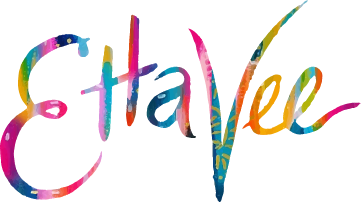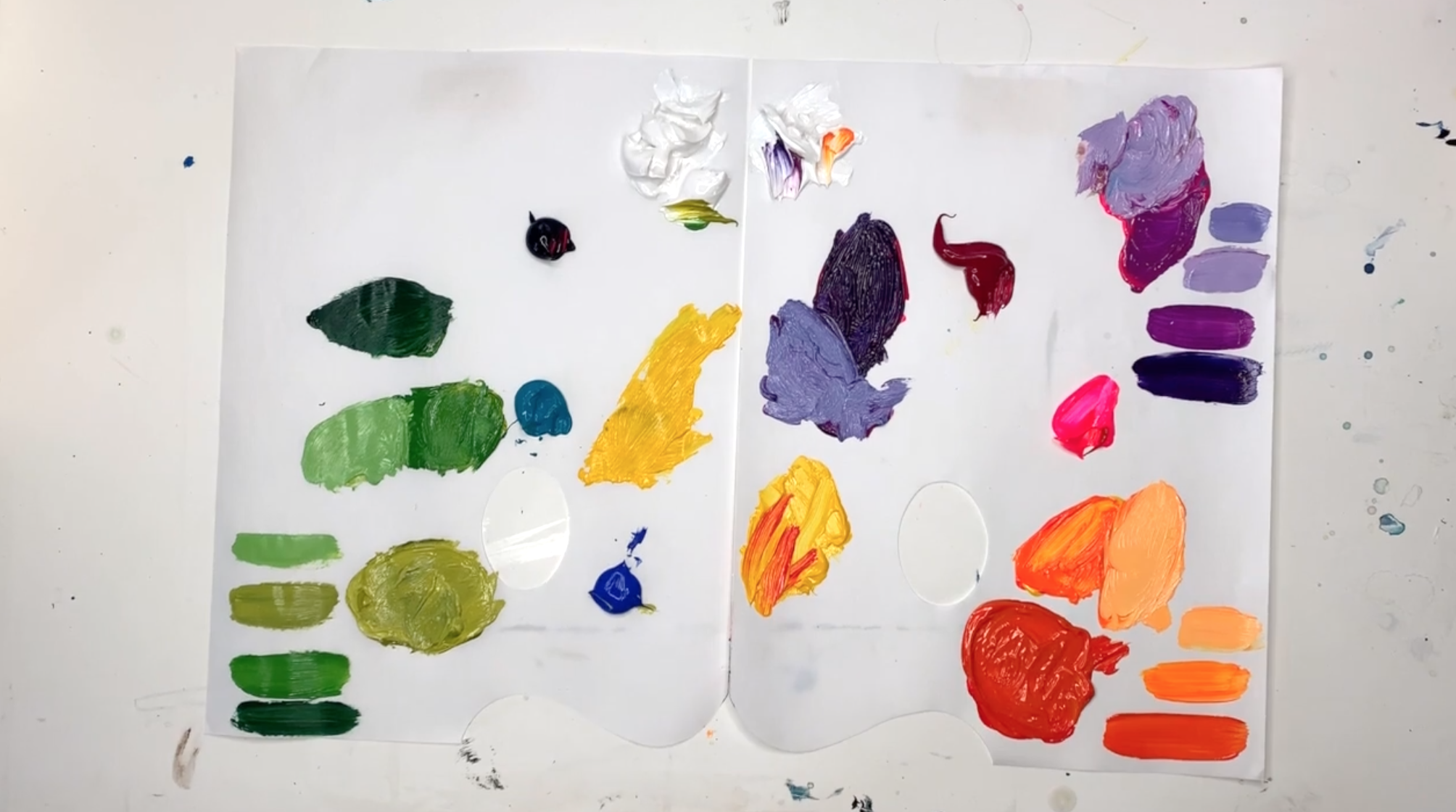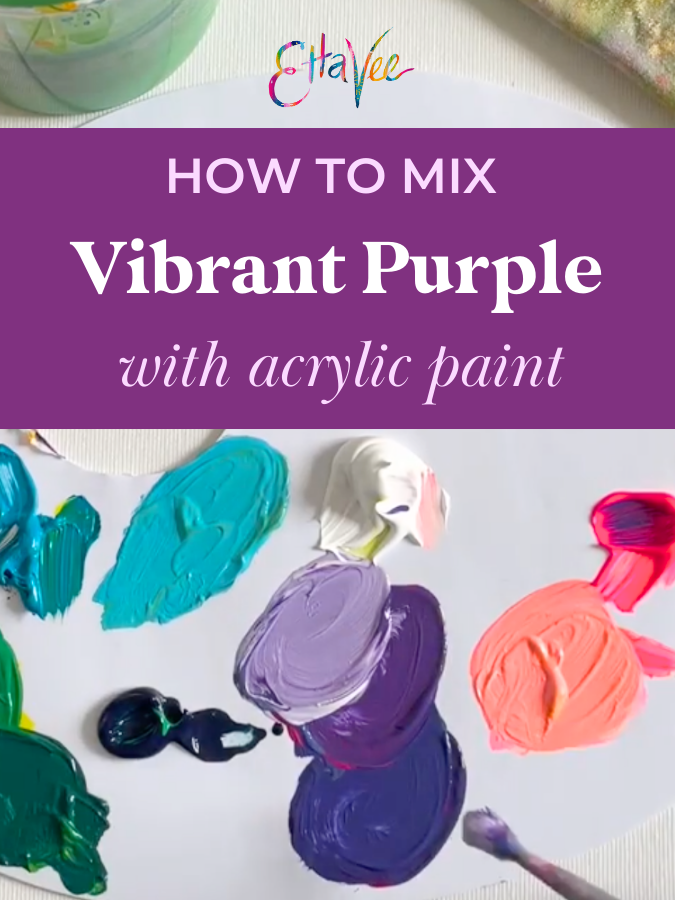How to Mix Vibrant Purple With Acrylic Paint
Color mixing with acrylic paint can be tricky to learn, but it’s so rewarding. Mixing purple is one of the trickiest acrylic paint mixing colors to get right. Oftentimes when you mix purple from red and blue, it can turn out looking quite dull. But with a few small tweaks, you can stop mixing muddy purple and start creating a vibrant masterpiece! In this post, you’ll learn how I mix vibrant purples to use in my colorful signature abstract paintings.
Mixing Purple - The Basics
The foundation of color mixing is the three primary colors – red, yellow, and blue. By mixing these primary colors together in different combinations you can create all the colors of the rainbow. The colors that make purple are red + blue. If you have primary red and primary blue in your paint set, you’ll be able to mix purple! (But read on for my recommendations for how to make a more vibrant purple!)
My favorite colors for mixing vibrant purple
The only problem with using primary colors for color mixing is that the colors they produce end up looking a little dull and muddy. I personally use a different set of primary colors in my paint kit! After years of experimenting with different color combinations, I’ve finally come up with three that produce the most vibrant acrylic colors!
Turquoise Blue
I use Turquoise Blue instead of Primary Blue. It’s dark enough to create beautiful deep shades for cooler colors, without them verging on looking muddy. I also like Prussian Blue, and Cobalt Blue for creating even more variation in your purple tones.
Primary Yellow
We won’t use this for mixing purple, but I wanted to note it just in case. I stick with the basics when it comes to yellow. It is bright enough to create vibrant hues and mixed with the magenta and turquoise it produces great results.
Quinacridone Magenta
This is my alternative to Primary Red. This Magenta can still produce beautiful and rich shades, but unlike Primary Red, it helps bring the colors more towards the “jewel tone” space. I use a lot of purples in my work, and primary red can sometimes be a bit too warm and it muddies up the purple. Magenta is a great alternative because it is already mixed with the warmth of the red but incorporates some of the cooler tones as well.
Fluorescent Pink
This isn’t technically one of my primary colors, but it is a staple in my art supply kit. It is so bright and vibrant and it’s my secret weapon when it comes to warming up my purple tones. Fluorescent Pink instantly takes your colors from muddy to vibrant!
Squeeze out some of each color onto your palette, and we’ll start mixing! I use a brush to mix my colors, but you can use a palette knife or whatever you’re comfortable with!
Now let’s dive into some specific color recipes for mixing purple!
How to make eggplant purple
First up, let’s mix a gorgeous eggplant purple! To mix this purple, take some of your magenta, and a tiny bit of turquoise blue. Blues have a much stronger hue than the warmer magenta, so a little goes a long way.
Always start with your lighter color. Adding a dark color to a light one makes for a better mixing experience. If you started with blue and added magenta to it, the magenta can have a tendency to get swallowed up by the stronger blue color. So start with the red, pink, or magenta color when mixing purple. I also prefer to mix little by little so that I don’t overdo it on my mixing.
Quinacridone Magenta + Turquoise Blue
How to make lilac
To mix a cool, lilac color, use the eggplant mixture from the previous step and add white. This will create a beautiful light lilac tone! You’ll probably need more white than you think, but just keep adding it little by little until you reach your desired shade!
Quinacridone Magenta + Turquoise Blue + Titanium White
How to make a bright, warm purple
My ultimate purple color mixing hack? Use Fluorescent Pink paint! This pink plus turquoise make the perfect shade of vibrant purple! Make sure to mix the turquoise in little by little because it can easily overpower the pink if you’re not careful.
Fluorescent Pink + Turquoise Blue
How to make light purple
To mix a light purple, take your mixture from the previous step and add white. It results in a beautiful pale purple!
Fluorescent Pink + Turquoise Blue + Titanium White
How to make dark purple
To achieve a dark, moody purple color, start with a base of the initial eggplant purple we mixed (Magenta + Turquoise) and add the tiniest bit of Prussian Blue. With Prussian blue, a little goes a long way, so be sure to mix this one little by little!
Quinacridone Magenta + Turquoise Blue + Prussian Blue
If you’re wondering what to do with all these lovely purples you’ve mixed, I’d love for you to join me in my Joyful Abstracts Class where you’ll learn how to paint a vibrant abstract painting inspired by the feeling of joy! The class is hosted on Skillshare and you can check it out for free when you sign up for a free month trial with this link!
And if you want to learn more about vibrant color mixing, check out this blog post where I dive into more detail about mixing an entire rainbow of vibrant colors!
xo, Jessi
Pin this post for later! 📌
Hover or tap on this image and click the “Save” button on the top left!









